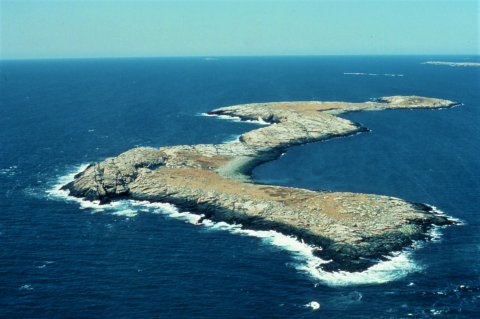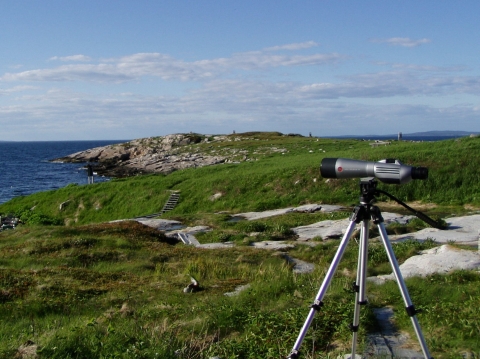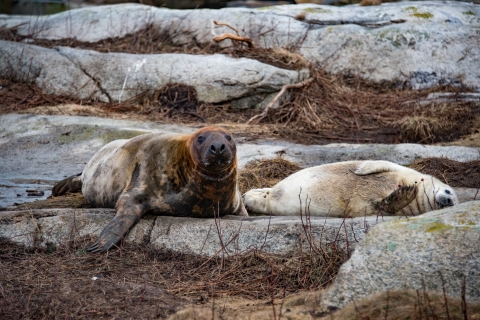About Us
Seal Island is one of the most important colonial seabird nesting islands in the Gulf of Maine. Boulder fields and ledges support a large colony of puffins, razorbills, black guillemots, and double-crested and great cormorants, grass/ledge areas for terns, raspberry and grass thickets for common eiders, and peat/glacial till substrate for Leach's storm-petrels. Seal Island is only one of five islands in Maine that host nesting great cormorants. The surrounding waters are rich with an abundance of food resources these birds depend on. The island is an important stopover for migrating songbirds, shorebirds and raptors.
Seal Island is managed in cooperation with National Audubon Society and in 1970s successfully reintroduced Atlantic puffins to the island by transporting chicks from Newfoundland, Canada. Seal Island also supports one of the largest tern colonies in the Gulf of Maine, supporting over 2,100 pairs of Arctic and common terns. Each year Audubon and Refuge biologists collect information on seabird populations, food habits, and productivity, and work to control predators such as great back-backed and herring gulls. Seal Island is vegetated with a variety of grasses and forbs interspersed with granitic ledge and rocks. Representative plant species include New York aster, beach pea, yarrow, raspberry, gooseberry, chickweed, shepherd's purse, creeping juniper, ragweed, and red fescue.
The Navy used the island as a bombing target from the 1940s until the early 1960s, the effects of the bombing and shelling can still be seen. Small craters and scarred granite are abundant, but the rank growth of grasses and raspberry has concealed most of the damage.
Seal Island was listed on the State Register of Critical Areas in January 1976 for its unique value to nesting black guillemots and Leach's storm-petrels. At the time of designation, the island supported the largest petrel colony in the eastern United States with 2,000 pairs, and one of the largest black guillemot colonies, 200 pairs, in Maine.
In 2000, Seal Island was recognized as the largest gray seal pupping island in Maine. Harbor and gray seals are common throughout the year. Fin, minke and humpback whales are sometimes seen in the surrounding waters. Minkes, like terns and puffins, feed primarily on small herring, and often come into the coves on the western side of the island.


